- Home
- Alistair Moffat
The Secret History of Here Page 24
The Secret History of Here Read online
Page 24
As Rory noted, doocots were popular on farms and estates because they were a year-round source of fresh meat, eggs, a rich guano that could be used to make lime mortar, tanning fluid or be an ingredient in gunpowder, as well as feathers for mattresses or pillows. Whoever was sent over from Haining House to harvest pigeons had, literally, a shitty job. Since the birds will not fly if they cannot see, death came to the doocot in the dark. Climbing a ladder, the unlucky servant would either lift squabs (unfledged chicks) or adult birds off their nests and then wring their necks. And just as human beings do when the trapdoor on the scaffold opens, the pigeons will have defecated when they were killed in this way. Most doocots were not populated by the ubiquitous wood pigeons that pester us around the farm. Their meat was dark and thought to be too gamey. Instead, white rock doves were preferred. More ornamental, their meat was also white, like chicken.
The doves fed themselves but could eat so much ripe corn that farmers complained. In fact, it was said that the doves from aristocratic doocots, colombiers, eating so much at harvest time was one of the sparks that ignited the French Revolution. In 1617, the number and size of doocots in Scotland was restricted by law and any more that were built were to be no more than two miles from the owner’s house – so that they ate his corn.
Visible from the windows and terrace of Haining House, and probably commissioned by John Pringle after 1729, the doocot had a secondary function as a kind of folly, a building that filled a western vista. It also became a monument to change. When butcher meat became cheaper and more readily available as farming modernised, and new industrial processes dispensed with the need for feathers and guano, doocots fell into general disuse. After the middle of the nineteenth century few new ones seem to have been built, and most of those for aesthetic rather than practical reasons. Which must have come as a relief to some. Harvesting the birds and eggs was one less shitty job that needed to be done.
7 August
The Fat Lambs were all lying down this morning, with grass up to their chins. The blackfaces are a strange black blank because their eyes are also black and so their features look like a mask, only the big, flicking ears showing any animation. Some have grown so fat on the lush grass you could roll them like a barrel.
Farming time ticks at a different pace from timetables, nine-to-five days and weeks, TV schedules or any of the everyday metrics that govern our lives. Growth proceeds at its own pace, influenced principally by the weather. The lambs are fatter earlier because the damp, warm and frequently humid summer has made the grass grow thick, sweet and tall. Farming time is accelerating but soon, as the days begin to shorten and the nights turn colder, it will slow down. And then, in midwinter, it will stop, dead.
Meanwhile time’s arrows flew overhead. This morning we seemed to be under the flight path into Edinburgh Airport and two aeroplanes were beginning their descent, their silver under-bellies lit by the sun. The loud drone of the engines made Maidie stop sniffing and look up, the tiny dog searching the sky for the distant roar of the leviathans. One of the planes banked slightly and I could make out the Union Jack livery of British Airways on its tail.
9 August
Heavy, continuous rain began to fall just before 6 a.m. and looks set to last most of the day. Scotland appears to have slipped down through the latitudes into the tropics: sun, humidity, thunder and monsoons. What these conditions will do to the imminent harvest, I don’t like to think. Further down the Tweed Valley, some farmers have cut their corn but here, six hundred feet up, we wait for better weather.
10 August
The wild raspberries at the top of the Bottom Track are plump with summer rain but still not sweet. Many have survived the birds’ attentions, probably because the hips and haws of the rowans and the thorns are turning red, and the geans, the wild Scottish cherries along the Top Track, look like little green apples. There will be an autumn feast for all.
Today’s forecast is for more heavy rain and we find ourselves having to cope with persistent bad weather, something we expect in the winter but not in the summer. Wendy and her foal should be out all the time so that wee Echo can stretch her long legs and thrive on the sweet grass, but both have to come in because of the thunder and the danger of a lightning strike.
11 August
In 1792, John Pringle the merchant bequeathed the Haining estate to his great-nephew, Mark Pringle. The grandson of the duellist, he had ambitions for his inheritance, especially the house. As the trees planted by both John Pringles matured, the policies grew more pleasing with every passing year. But the house at their centre, what the loch and the trees around it were intended to frame, did not fit with Mark Pringle’s vision for his new estate. In 1794 work on a new house began. Georgian in style and scale, with neo-classical columns and a portico to the south, its look would sit better in the newly created Romantic landscape than the old Scottish vernacular pile. Postcard-perfect, picturesque Poussin was preferred to the snug utility of the past.
Views of the house, as well as those from it, were carefully considered and Windy Gates was thought to offer the best aspect. The Long Track was to be lined with specimen hard-woods and known as the South Drive. It was to become part of a circuit for genteel afternoon outings. When gentlemen and ladies with their parasols climbed into a well-sprung carriage on a sunlit afternoon at the big house, it took them first around the Haining Moss to the east. The hard standing for the drive is still there, running along the fence line. Then the coachman turned the carriage south down a lovely track that still runs through my neighbour’s grass park to the west of our farmhouse. In places it must have been a business to make because the road bed is shelved into the natural undulations of the field. Once they reached the lane, the line of the old Roman road, the reins were flicked and the horses guided to go left until they reached the foot of the Long Track/South Drive. Once up at Windy Gates, the best, most idyllic view of the new neo-classical house could be enjoyed. Et in Arcadia sumus.
With the new felling to the south of the loch, that old vista has opened once more and now, since the Haining and its grounds have been bequeathed to the public for their use, everyone can enjoy it. And now one only needs to move past the gas substation with its spiky railings, safety warnings, shiny pipes and other mysterious machinery to return to something first seen in Regency times, the epitome of fashionable elegance. In his otherwise encyclopaedic and scholarly History of Selkirkshire, Thomas Craig-Brown is gushy and pretentious about this vista:
In early summer, when the sun is shining, and when the loch reflects a sky of blue, the wanderer by its margin might well believe himself on the enchanting shore of Como, or roaming by the lake of the Doria Pamfili Palace at Rome.
But there is one important, and remarkable, qualification to this puffery. The Pringles did not demolish the despised old house and kept it standing close to the new so that it could be used as servants’ quarters. Not quite such an idyll, and not something that would ever have been considered at the Doria Pamfilj.
12 August
Piou-piou is as close as I can get to the plaintive cry of a buzzard, heard as Maidie and I walked through the rain down the Long Track. It has been falling for more than twenty-four hours without cease, often heavily, and the land was sodden, the long grass bent, the leaves dripping and the track a brown torrent. Perched on the telegraph line was the buzzard, the hawk in the rain. On this soaking morning, it searched the margins of the track for movement. But there was none.
The Haining Loch looked less like Il lago di Como and more like Loch Lomond in January.
15 August
Even though I have ridden only occasionally, and more than ten years ago, I believe I have a folk memory, an innate feeling, perhaps even an instinctive liking, for horses. As late as 1800 most people worked on the land or in food production in some way and they were constantly close to horses. They pulled ploughs, carts and were ridden. We have been in the company of horses for thousands of years in one way or another and it is on
ly in my lifetime that they have been replaced by the internal combustion engine.
In my youth, Kyle’s Stables were right in the centre of Kelso, a set of rickety green looseboxes just off the Square. In what is beyond historically ironic, a car park now occupies the site. Around the town, horses pulled carts loaded with bags of coal, milk floats and much else. They were ridden, and still are, for pleasure in the Border common ridings and Kelso has a famous racecourse. This departure of the horse from our lives is a profound break with a long past and it fills me with pleasure that we have them here. Such beautiful, noble, trusting creatures, they deserve our gratitude, love and respect. They are not quite yet fled from our lives.
With some trouble (lots of medical and police checks, and some bureaucracy, and a cost of £70), I renewed my shotgun licence, and hidden away in a locked cabinet are two excellent old-fashioned side-by-side guns. Beautifully made with tooled metal and shiny walnut stocks, they might become important to the farm and my efforts at growing our own food. We may have to shoot it as well. There are far too many wood pigeons and pheasants, but the rabbits who scamper about in profusion might be safe enough. For some years, I have seen diseased rabbits dying in the verges, probably infected by new versions of myxomatosis. The other day I saw one sitting on the white lines in the middle of the main road, clearly sick, and I hoped a big lorry would put it out of its misery soon. I couldn’t find the courage. It would vex me very much to shoot birds, to say nothing of gutting them and plucking them, but who knows, it might come to that. Adam is an excellent shot, a natural, far better than me when we used to go clay pigeon shooting. I should buy some new cartridges, just in case.
The first leaves fell today. But the land is not gently mellowing into autumn. Instead the weeks of rain have left the ripening fields sodden. The combine harvester churned so much mud in the barley fields that it was forced to stop, leaving the steeper swales and hollows for another, drier day. If it had attempted even these slopes, the great machine might have slid and crushed the standing crop.
17 August
At the turn to the Top Track, the early morning sun lights the grass like an invitation. At last there is a little warmth as Maidie and I splash through the puddles up to Windy Gates. The accidental apple tree is laden and I noticed some finches pecking at its ripening fruit. When the birds get to the core and the shiny black seeds, they will carry off their cargo and drop it far from the mother tree to make new life possible.
18 August
When we left the house, the sun was shining brightly, but by the time Maidie and I reached Windy Gates, the rain was sheeting down. August. Without a hat, I pulled my jacket tight and marched on briskly. Shelter from bad weather is something fundamental and many of my instincts as a parent and a husband are linked to the need to provide protection. Sometimes in dreams, all five of us are caught in a storm and we find somewhere to get out of the worst of it. The image is always the same. With my back to the weather, I keep the rain or snow or wind off Lindsay and the children. It is not heroic, just instinctive. The reality is that at our advanced years it should be the children protecting us. But instinct has no respect for reality.
Thinking about this, I was reminded of a story about how parenthood never ends. A ninety-five-year-old lady was being interviewed and asked about what made her happy or anxious. ‘Well’ she said, ‘I can relax a bit now that I have got my eldest into a care home.’
19 August
After only a handful of weeks when early morning walks did not need a jacket, I wrapped up warm even though the sun shone. A stiffening breeze was blowing out of the east, drying the drenched fields, bringing autumn closer. The tracks are still speckled with the tiny browning petals of the blossom that brought the hips and haws that are bending the branches of the rowans and thorns. Soon their leaves will follow, as the year and the land begin to die.
In yesterday’s newspaper I saw a very beautiful photograph of the wild landscape of the Isle of Lewis. It looked south to the hills of Harris. What the journalist (also the photographer) described as ‘layer upon soft layer of pastel colours, from gold through green to blue, laid like chiffon scarves across the horizon’. Wonderful writing that caught a moment of quiet subtlety in that elemental place. I began to think of Dalmore, somewhere my thoughts sometimes turn. I remembered the funeral at the graveyard, the smooth, wave-worn boulders on the beach and the echoes of a different cycle of time I first heard whispered there. The article in the paper reminded me how awed I was by the mighty majesty of Dalmore, how the thunder of the waves and the eternities of the Atlantic stirred a sense of the vastness of creation.
But I do not love it. The beauty of the bay, the breakers, the sea stacks and the cliffs are cold and perfect, untouched, unaffected by the hand of men and women. For me, it is the fields that are beautiful, the hedges, the woods, the shelter-belts, the tracks, the fences, and the corners where I might sit to watch the birds, our horses and the glowing sum of all the work done over millennia by hundreds of generations of farmers who shaped and tamed the wilderness, the prehistoric Wildwood, into places where food could be grown. The warmth of domesticity, its detail and connectedness are what I love and where I feel my heart is at home.
21 August
For reasons I must discover from my neighbour, he has put two yellow ewes in one of the grass parks by the Long Track. Bright primrose yellow, with red numbers on their rumps, they look very odd indeed, like cartoon sheep. So odd that the normally placid pony Princess spooked when she was led past them and Saffy, an old cob who has seen it all – but never seen anything like these yellow ewes – went sideways as she passed.
In Huppanova, the old bull is back with his cows. A lugubrious giant, his balls swinging under him like the pendulum of a grandfather clock, he seemed to be building up his stamina, munching great mouthfuls of lush grass. His chest is so deep and his great head so massive, it will be a feat of extraordinary athleticism when he starts to mount his cows. I just hope that not too many of them decide to move forward at the last moment. Some are still suckling their calves from this spring and they might not be too keen on the old boy’s attentions.
Given the difficulty the older cows can have when they birth, I would not be surprised at diffidence. A few years ago, my old neighbour called me to ask for help pulling out a calf that was breeched, positioned the wrong way round. As a last resort the vet was planning a bovine version of a caesarean section, ‘going in the side door’, but they wanted to try one last heave. Lying slightly on her side, the old cow was distressed, lowing loud and plaintively. While my neighbour did his best to stop her kicking me, I plunged my arm past all sorts and into the cow’s uterus. I was given the job because I have long arms, longer than the wee vet’s. After feeling around at his instruction, and being more or less continuously shat on, I felt I had hold of the calf ’s lower jaw, its soft, rubbery teeth, and I pulled as hard as I could. I must have been able to turn her, for she shot out, shoving me backwards into the straw and landing on my legs.
After I’d had a wash by the tap in the steading and a tin of cold lager, I saw the old cow get up and start licking her girl. My other reward was to choose a name. Daisy, of course.
22 August
Lindsay has decided that the Deer Park needs to be properly fenced and work at last started in earnest yesterday. Surrounded by a broken perimeter of ancient and rusty barbed-wire fencing, a run of medieval ditches and revetted banks, with a high but porous dyke on the eastern side, the park had become useless for grazing. And so, for what will be a small fortune, hundreds of fence posts will be knocked in, stock mesh and barbed wire attached and an electrified wire run through some of it. The voracious appetites of many cows are urgently needed to reduce the tangle to manageable pasture. What we own is beautiful, but it is not scenery and it needs to be grazed and maintained. And that costs a great deal of effort and money.
On the old western road to Selkirk, the one that was shifted north by the Pringles, Rory has found
something exciting, possibly the closest thing to real treasure. It is a cast copper alloy fragment of what is probably an Anglo-Saxon brooch, perhaps sixth or seventh century. That is very interesting and another small part of a building, developing mosaic, a picture of early Selkirk that is slowly coming into focus.
23 August
A tiny, velvety, perfect young rabbit, no more than a few weeks old, sat stock-still in the long grass where the Bottom Track turns. I saw it late, when Maidie and I were almost upon it, only five yards away, and all that moved was its blinking eye, its heart no doubt surging with terror. And yet, the fierce Westie, always avid for every sniff of potential prey on our morning walks, did not notice and ambled on along the Top Track. The little rabbit stayed motionless until we were about twenty yards away – and then resumed grazing! Animals truly do live in the moment.
A breezy sun this morning and a good forecast for the next few days. No sign of the tropical downpours that have drenched the land for most of August. Perhaps the bank holiday will be warm and the roads of the south of England will be cheerfully clogged as city dwellers try to drive somewhere else.
Maidie is becoming occasionally hysterical (not literally, of course, since she was spayed a few weeks ago), barking, rushing at and nipping the other dogs, trying to get loose to charge at the foal in the home paddock. Sometimes for ten minutes or more she simply loses it. I grab her, shout commands, and she is cowed and calm for a few seconds before another firework goes off in her head.

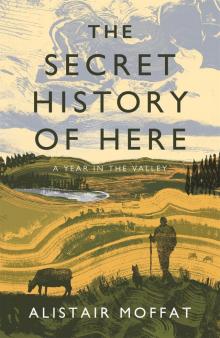 The Secret History of Here
The Secret History of Here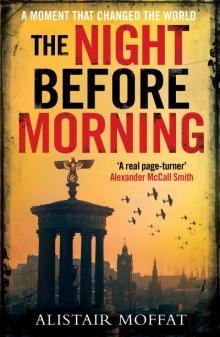 The Night Before Morning
The Night Before Morning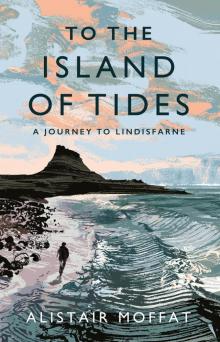 To the Island of Tides
To the Island of Tides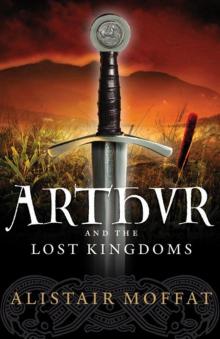 Arthur and the Lost Kingdoms
Arthur and the Lost Kingdoms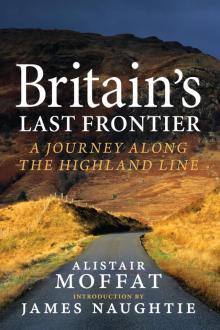 Britain’s Last Frontier
Britain’s Last Frontier The Faded Map: The Lost Kingdoms of Scotland
The Faded Map: The Lost Kingdoms of Scotland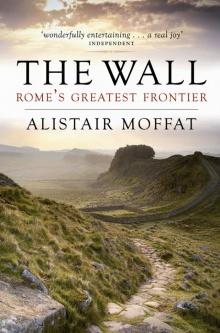 The Wall
The Wall